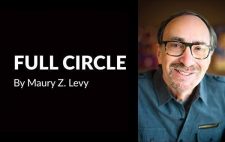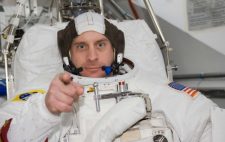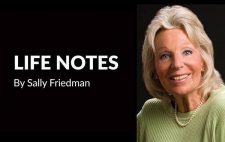ORIGINAL DATE OF PRINT: 2011
Considering his many accomplishments, Mehmet Oz, MD, — better known as TV’s Dr. Oz — is a man behind many curtains. If the Bergen County resident isn’t traversing the world taping segments for his Emmy-award winning daytime show, he might be performing heart surgery at the New York-Presbyterian Hospital. Or, maybe he’s teaching at Columbia University or researching heart-related issues for potential patents. In his spare time he writes books, serves as a medical advisor to movies, and even enjoys family time in Stone Harbor. Through it all, the 51-year-old is on a mission to make the world a healthier place for everyone.
“You are the biggest factor that affects your health,” he insists. “How you eat, live and treat yourself is the single most determining factor in whether you are sick or well. Not genetics, not circumstances. By the time we are 50, 80 percent of our health is determined by lifestyle. If people knew this and took ownership over it, there would be a lot less suffering and longer lives.”
The Early Days
Dr. Oz was born in Cleveland and raised in Delaware by his Turkish immigrant parents. His culture remains pivotal in his life today.
“The great thing about America is that you can hold on to whatever heritage you come from,” he explains. “We celebrate the different cultures, so I had the privilege, as the son of immigrant parents, to grow up American while staying deeply in touch with my Turkish roots. I have a great deal of family back in Turkey, I lived there for a period as a boy and I served in the Turkish military, which is compulsory for dual citizenship.”
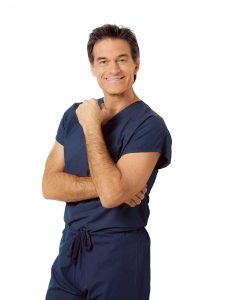 He credits his father, Mustafa, who is also a doctor, for influencing his medical career. At just 4 years old, young Mehmet was stung by a bee and suffered a strong allergic reaction. He might have died, had it not been for his dad who immediately rushed him to the hospital. He still calls on that experience to gain empathy for others.
He credits his father, Mustafa, who is also a doctor, for influencing his medical career. At just 4 years old, young Mehmet was stung by a bee and suffered a strong allergic reaction. He might have died, had it not been for his dad who immediately rushed him to the hospital. He still calls on that experience to gain empathy for others.
“The bee sting was a traumatic experience, not so much because of the pain, but the panic around my allergic reaction,” he says. “I sympathize when I see panic in my patients’ faces, and I want to do whatever I can to alleviate that.”
A strong student, Dr. Oz earned his undergraduate degree from Harvard University in 1982 and went on to receive a joint MD and MBA from the University of Pennsylvania and The Wharton School of Business. He became a heart surgeon who treated patients, published research and worked on patents for heart-related devices. Then he met Oprah Winfrey.
The Oprah Factor
“My wife conceived and created a show on Discovery many years ago called Second Opinion,” Dr. Oz recalls. “Oprah Winfrey was my first guest, and we hit it off. She then had me on her show, and I ended up being a guest in more than 50 episodes.”
As a featured health expert on The Oprah Winfrey Show for more than five seasons, Dr. Oz created a loyal following. He launched his own daytime talk show, The Dr. Oz Show, in 2009, which is now in its third season. Though the cardiothoracic surgeon continues to treat patients, he has become somewhat of a media sensation. He also hosts a daily talk show on SiriusXM Radio.
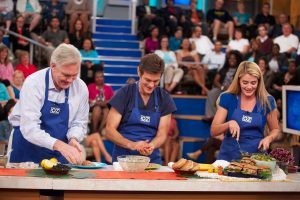 “I can affect more lives than I ever could if I stayed in the operating room my entire career,” he says. “I had an epiphany, with the help of my wife Lisa, after a discouraging day at the hospital, that people needed to know how to eat and how to live. If they knew these things, then most would never need heart surgery. Television is a tremendous platform where I can offer health and wellness advice, so it’s been a great tool in helping others get healthy. Often I have audience members who come onstage with me and I see a certain spark in their eyes — the moment when they get it — and that’s the most rewarding part.”
“I can affect more lives than I ever could if I stayed in the operating room my entire career,” he says. “I had an epiphany, with the help of my wife Lisa, after a discouraging day at the hospital, that people needed to know how to eat and how to live. If they knew these things, then most would never need heart surgery. Television is a tremendous platform where I can offer health and wellness advice, so it’s been a great tool in helping others get healthy. Often I have audience members who come onstage with me and I see a certain spark in their eyes — the moment when they get it — and that’s the most rewarding part.”
But that doesn’t mean he’d consider giving up practicing medicine completely. “It reminds me who I am and where I come from,” he believes. “It’s where I get my Chi. It grounds me and humbles me. Once a week I get to be a doctor among doctors and use my training to save lives. There is no greater privilege.”
Dr. Oz also recognizes that his practical work makes his TV show that much stronger. “Practicing medicine and continuing research help me be a better host and influence the topics we cover on the show,” he says. “I would never want to be removed from the pulse of medicine because it reminds me of what we are trying to accomplish on the show.”
Viewers are hooked. The program is bombarded with mail asking questions, sharing concerns, and expressing appreciation for what they learned on his show. Viewers most frequently ask about the easiest way to lose weight.
“Here is my advice: 1) get in at least 10,000 steps every day, and 2) cut out white foods, like white bread, pasta and rice,” he says. “Getting a pedometer and reaching for whole grains are two simple ways to jump start weight loss.”
Dr. Oz faced his own health scare in August 2010, ironically on television. He was diagnosed with a pre-cancerous polyp in his colon during a routine colonoscopy, performed as part of his show.
“I’m not going to lie, I was scared,” he says. “However, it was a teachable moment. I needed to share it with my audience as a way to educate but also to remain authentic. What I learned — and I hope, my audience learned — was the importance of diagnostic testing. I live what I teach, so my lifestyle and diet is what it’s supposed to be, yet I still wound up with a cancer scare. That means diagnostics is part of a healthy lifestyle. But the reason I televised such a personal procedure is to normalize the experience for my viewers. I wanted to remove the fear and awkwardness surrounding colonoscopy, and I think I accomplished that.”
Family First
Despite his hectic schedule, Dr. Oz makes family a priority. He’s been married to his wife, Lisa, for 25 years, and they have four children, Daphne, 25, Arabella, 20, Zoe, 17 and Oliver, 12. (Daphne is following in her dad’s daytime TV footsteps as one of the co-hosts of The Chew.) His New Jersey address gives him easy access to New York City, where he works and shoots the show.
“It’s not an issue of time management, it’s actually energy management,” he says. “You can have plenty of time, but if you don’t have energy and attention for your loved ones, it’s meaningless. I try to integrate my family into some of my work opportunities — my trip around the world this summer to visit other countries to support the show was a family trip.”
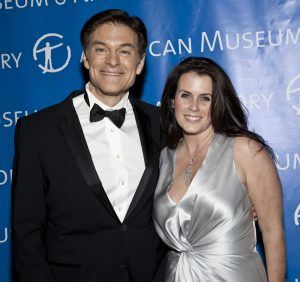 The family also enjoys visits to his in-laws home in Stone Harbor. Time together often includes physical activity. A health junkie himself, Dr. Oz is an avid basketball player who plays on the weekends with a group of friends. He also enjoys fishing with his son, Oliver. “We caught salmon in Alaska this summer,” he says. “I am addicted to exercise and try to work out with my wife so we can spend more time together. As a family we love apple picking and hiking.”
The family also enjoys visits to his in-laws home in Stone Harbor. Time together often includes physical activity. A health junkie himself, Dr. Oz is an avid basketball player who plays on the weekends with a group of friends. He also enjoys fishing with his son, Oliver. “We caught salmon in Alaska this summer,” he says. “I am addicted to exercise and try to work out with my wife so we can spend more time together. As a family we love apple picking and hiking.”
He also appreciates medical movies especially when they are realistic. The director of Contagion and the director of the Centers for Disease Control and Prevention were recent guests on his show, because of how “brilliant the movie was at depicting a real life scenario,” he says. He also served as technical advisor for John Q, a film starring Denzel Washington as a father trying to get insurance approval for his son’s heart transplant.
“Fictional movies can be educational in addition to entertaining, and I love helping the movie makers try to get it right,” he says. “The productions I have worked on hired me because they wanted an accurate medical portrayal. I think, generally, there’s been an interest to offer realistic experiences to audiences, but we have to remember it’s still entertainment, and they are looking to tell the most compelling story.”
Dr. Oz wears many hats but all of his roles fulfill his goal of helping people. To that end, he has been involved in developing patents for devices related to heart health. “I’m always looking for methods to advance how we treat and diagnose patients,” he says. “I hold several patents, many are related to aortic valve replacement, but the early ones were on mechanical heart devices called LVADS (Left Ventricular Assist Device). It’s essentially an implantable engine to keep a patient’s heart beating while awaiting a transplant.”
His research has taught him many valuable lessons. “I was convinced if I just figured out how to help a diseased heart I would find the holy grail,” he explains. “I have since come to realize that the holy grail is teaching a person how to avoid heart disease in the first place, which is harder than any mechanical heart invention ever could be.”



